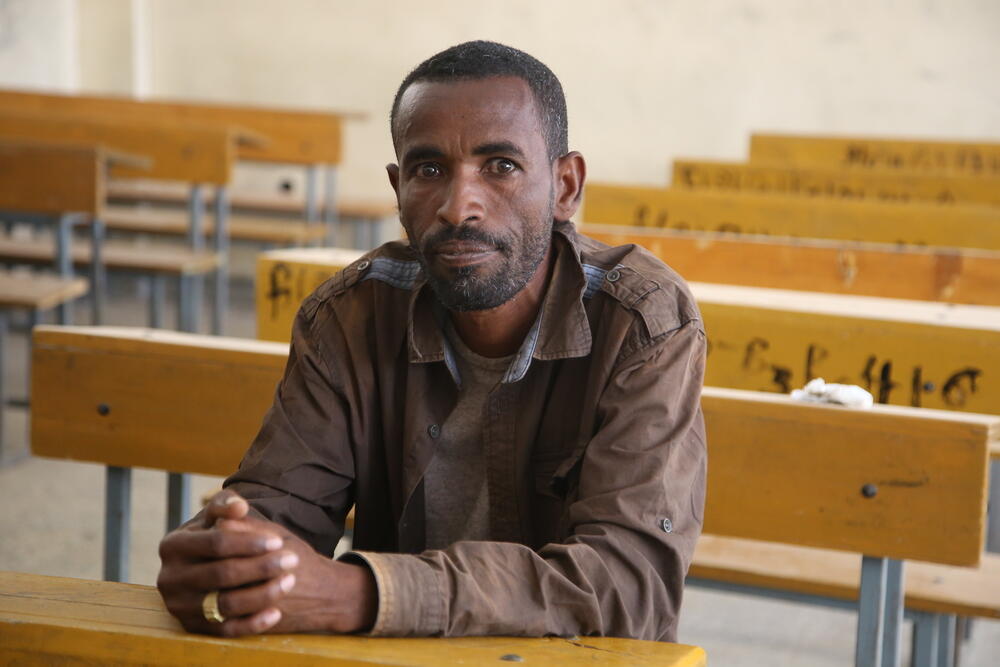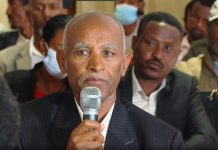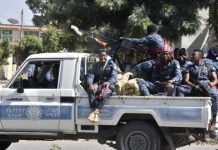Africa-Press-Ethiopia
In recent weeks, tens of thousands of displaced people have arrived in cities in the conflict-hit region of Tigray, northern Ethiopia. They join others who arrived earlier and are staying in schools and empty buildings, in poor conditions and without basic services. Many have already been displaced multiple times since November.
The roof of the five-storey building of Tsegay Berhe school in the city of Adwa is open to the blue, cloudless sky. During the first days of the conflict in this northern Ethiopian region, the building was hit by a number of rockets. Two of the classrooms are littered with the smashed remains of computers, monitors, chairs and books. The remaining classrooms were untouched, but often the wooden benches have been stacked in corners or taken outside, while chalked fragments of lessons are still visible on the blackboards.
At the gate of the school there is plenty of action and hundreds of voices create a wall of noise. A group of administrators are busy registering names in big notebooks, but they are not the names of students. School is off until further notice.
Today, primary and secondary schools in towns and cities across the entire Tigray region, such as Adwa, Axum and Shire, are the epicentre of a huge displacement crisis, numbering hundreds of thousands – although no one knows the real number. In recent weeks, this crisis has taken on a desperate shape, with tens of thousands of people moving into cities in search of safety and humanitarian assistance as resources become depleted in host communities and the more remote rural areas.
Continuous displacement
Ken Alew Gebrekristos, 38, a metal welder from the central Tigrayan town of Edaga Arbi, about 50 kilometres southeast of Adwa, arrived here in the second week of March. During the day, his wife and two older children go into town in search of aid, while he remains in the school, listening out for any new information that could improve their situation.
“So far we have been given some injera (flatbreads) and T-shirts,” he says. During the night, they sleep on the hard floor of one of the classrooms.
Adwa is just the most recent destination for this family of six. In the early days of the crisis, they saw their home town filling up with people fleeing violence elsewhere and later witnessed it being attacked by Eritrean soldiers.
In November, the family was forced to flee into the hills, taking nothing but their clothes and carrying the youngest children on their shoulders. On the way, they passed dead bodies on the ground. They kept on walking, asking locals along the way for shelter and food.
“We fetched water from the river to drink,” says Ken. “Some days we ate nothing. One girl who was displaced with us gave birth, with no doctor around. We had just a bedsheet to offer them, so we made a fire to warm up the baby.”
They attempted to return to their destroyed home, but the feeling of insecurity deterred them from staying there.
With tears in his eyes and his voice breaking, Ken says: “Now I have no plans, no idea what my immediate future looks like. I can’t go back home – how could I go back without guarantees? I feel safer here surrounded by other people.”






